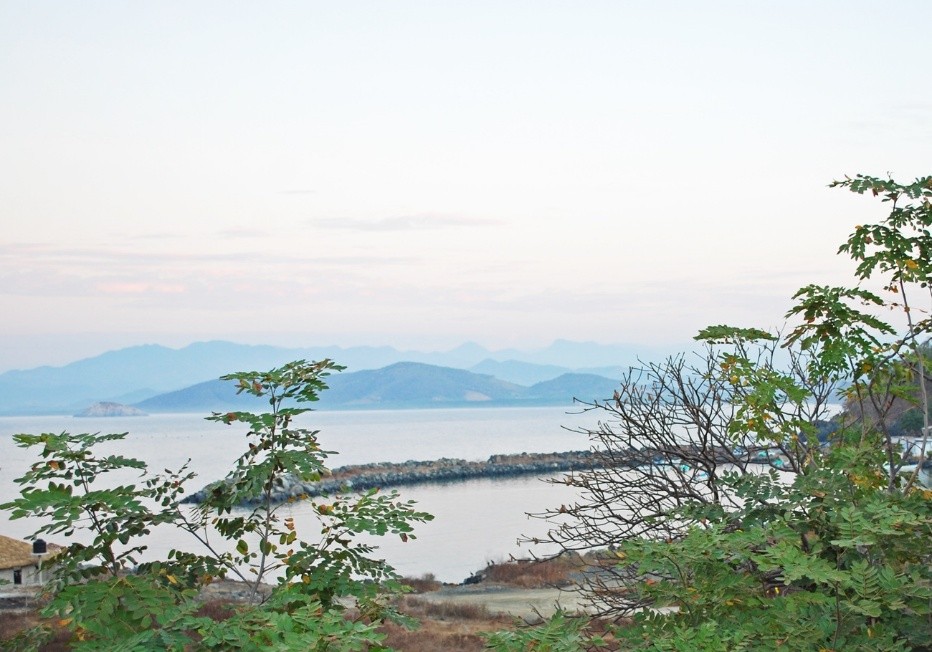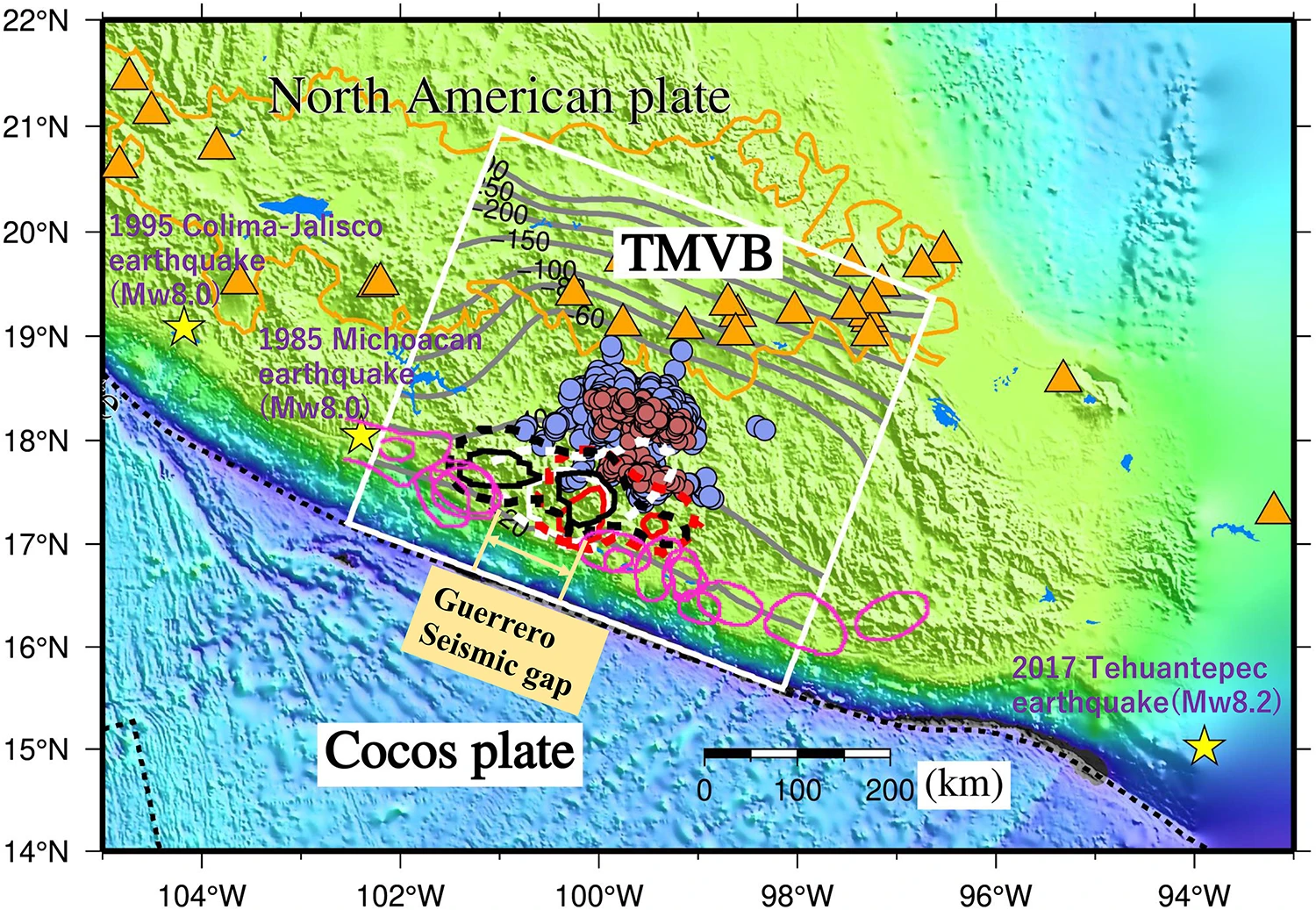
Plate temperature and water release can explain the occurrence of different types of earthquakes in Guerrera, Mexico. The Kobe University simulation study also showed that the shape of the Cocos Plate is responsible for a gap where earthquakes haven’t occurred for more than a century. The results are important for accurate earthquake prediction models in the region.
Where one tectonic plate is pushed down by another, the resulting stress is released in various tectonic events. There are catastrophic megathrust earthquakes, unnoticeable “slow slip events,” and continuous low-frequency “tectonic tremors,” and knowing which occurs under which conditions is essential to predicting earthquake probabilities and thus preparing for disasters. Kobe University geophysicist SUENAGA Nobuaki says: “We are especially interested in gaps where earthquakes are less likely to occur, because we assume that there is some difference in physical conditions at the plate interface.” Being a specialist in three-dimensional computer simulations to understand the relationship between earthquakes, the temperature at the interface between the plates, and the role of water produced when rocks are transformed under great heat and pressure, Suenaga wanted to apply his experience to finding out what conditions create these distribution patterns.
His team also includes the Colombian research assistant Erika Moreno, who experienced a devastating earthquake in 1999 which also destroyed her family’s house. “I did not understand what was happening around me and so I decided to study Earth sciences to add to our knowledge about the nature of earthquakes,” she says, also mentioning that her studies led her from her home country via the National Autonomous University of Mexico to Kobe University for their pioneering research on computational modeling of earthquake mechanism.

Suenaga’s team thus focused on studying the Guerrero region of Mexico, explaining: “In this region there is a gap where no major earthquake has occurred in over a century, and the risk of one occurring in the near future is high and the expected damage is large. So we thought that the area is important.” However, computer models need to be verified by actual measurements, and the data usually used for this is not available in that area. “We introduced a new indicator that uses data obtained by ships, aircraft, satellites etc., and this made it possible to evaluate our model,” explains the Kobe University researcher.
His team published their results in the journal Scientific Reports, reporting three main findings. First, they were able to show that the temperature at the interface between the plates is a good predictor of the type of earthquake. Second, the seismic gap is caused by the specific shape of the plate in that area, which causes temperatures there to be lower than in the surrounding area. And third, water released from the transformation of the rock can explain the occurrence of slow slip events and tectonic tremors. “This study is the first to estimate the specific amount and location of that water and it revealed that the increased pore pressure from the water could reduce the stress between the plates, allowing them to slip more effectively. Thus, the Guerrero seismic gap can release strain energy through slow slip events,” says Suenaga. Simply put, this area is better lubricated.
However, other studies showed that slow slip events likely don’t release the stress in all parts, and in particular not in shallow parts of the plate, which is where megathrust earthquakes causing catastrophic damage occur. Suenaga explains, “Slow slip events are often seen as precursors of huge earthquakes and so it is important to understand the mechanism behind low slip events.” Moreno adds, “Our work is crucial because studying the way plates are pushed underneath others and the processes that occur as a consequence provides insights into the distribution of volcanism and the locations of earthquakes.”
One goal for this work is to help authorities to make better estimates of earthquake risks and thus improve preparedness. But Suenaga wants to generalize the results to other regions. He explains: “Since the tectonic background and underground structure are completely different depending on the region, it is very difficult to construct a single physical model that can explain earthquake phenomena everywhere. However, we hope to get closer to a universal numerical model by continuing to build models for various subduction zones and deepening our understanding of the physics of earthquake occurrence and modeling know-how.”

